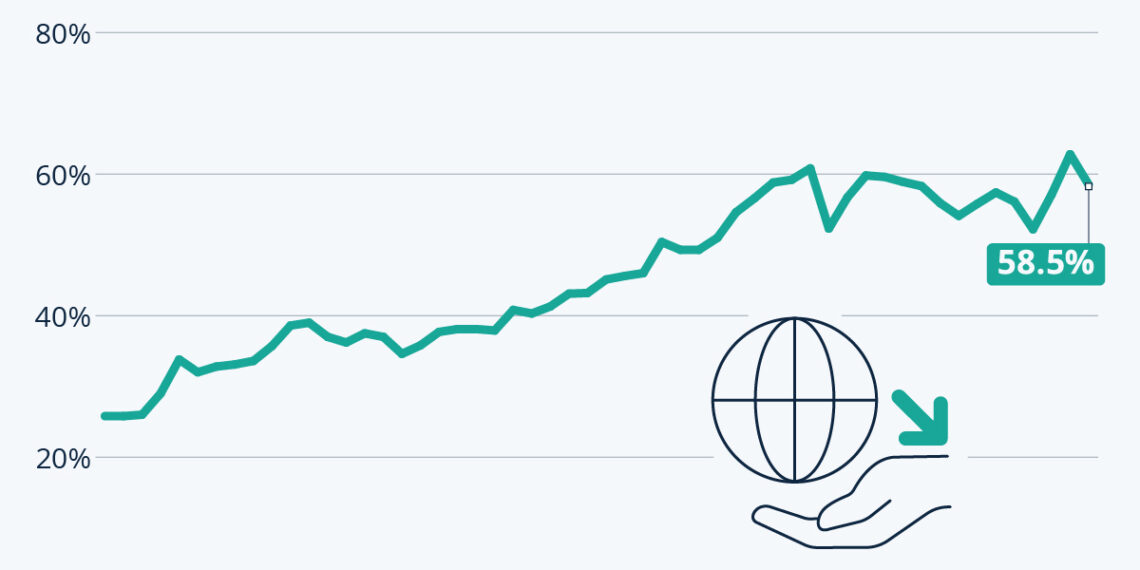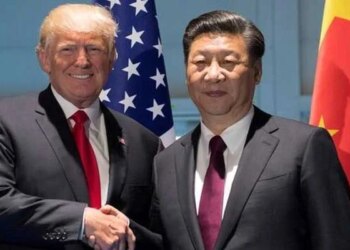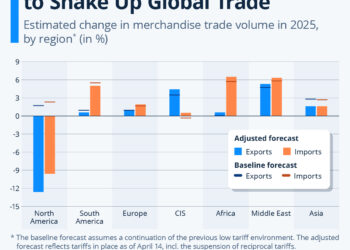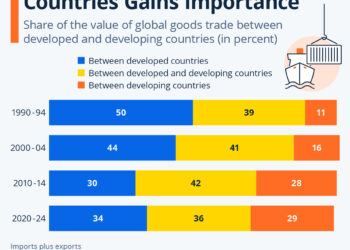Select Language:
The Evolution of Globalization: A Historical Perspective
Globalization, a term that permeates discussions around economics, culture, and politics, refers to the interconnectedness and interdependence of nations through trade, investment, and cultural exchange. This phenomenon has been in motion for decades, profoundly influencing how countries engage with one another. In examining the trajectory of globalization, it’s essential to recognize both its peaks and troughs, which reflect changing geopolitical landscapes.
Early Years of Globalization
In the late 20th century, particularly post-World War II, globalization gained momentum as a result of technological advancements and policy reforms. The establishment of international organizations such as the United Nations and the World Trade Organization laid the groundwork for a cooperative global framework. Trade barriers began to fall, and nations recognized the mutual benefits of engaging in international commerce.
The Impact of the Financial Crisis
The global financial crisis in 2008 marked a significant turning point for globalization. Following years of growth, confidence in the interconnected global economy faltered. Trade stagnated as countries focused inward, scrutinizing their economic dependencies. The crisis laid bare the vulnerabilities inherent in global supply chains, prompting nations and businesses to rethink their positions within this web of international exchange.
Nationalism and Protectionism on the Rise
The Reemergence of Nationalistic Policies
In recent years, a resurgence of nationalism has posed challenges to globalization. Economic uncertainty, driven by perceptions of inequality and exploitation in the global trade system, has given rise to protectionist sentiments across various countries. Leaders who prioritize domestic interests over international cooperation have emerged, fundamentally altering the landscape of global trade.
Case Study: The United States and China
The trade relationship between the United States and China exemplifies the shifting dynamics of global trade. Under the Trump administration, tariffs were introduced as a tool to combat perceived unfair practices, leading to a trade war that disrupted longstanding supply chains. This situation underscores how political decisions can ripple through the global economy, leading to increased tensions and restructuring of trade relations.
The Covid-19 Pandemic: A Double-Edged Sword
Initial Setbacks in Global Trade
The Covid-19 pandemic served as an unforgiving reality check for globalization. As countries closed their borders and implemented lockdown measures, the flow of goods and services drastically declined. In 2020, the global trade-to-GDP ratio fell to its lowest level since 2003, showcasing the fragility of supply chains and the interdependencies built over decades.
A Quick Recovery and New Challenges
Despite the initial shock, the world witnessed a remarkable rebound in trade levels post-pandemic. By 2022, the global trade-to-GDP ratio peaked at 62.8%, signifying a resurgence in commerce as economies reopened. However, this upward trend was short-lived, dropping to 58.5% in 2023. The underlying reasons for this decline are multifaceted, including ongoing geopolitical tensions and uncertainty regarding future trade policies.
The Current State of Globalization: Is It Peaking?
Analyzing Recent Trends
The current climate suggests that we may be witnessing the peak of globalization. The circumstances that marked earlier growth, such as low tariffs and collaborative international frameworks, are now under threat. The rise of tariffs, especially in light of the United States’ renewed protectionist policies, compels companies and nations to reassess their participation in global trade.
The Future of Supply Chains
As businesses grapple with uncertainties related to tariffs and trade relations, many are reconsidering their supply chain strategies. The lessons learned from the pandemic—regarding vulnerabilities and dependencies—are prompting organizations to seek more resilient and localized supply chains to safeguard against future global disruptions.
The Role of Economic Uncertainty
Uncertainty regarding long-term trade policies adds a layer of complexity to the current situation. While some argue that the tariffs introduced in response to global trade issues will not stand the test of time, their short-term impacts may lead companies to fundamentally shift their operational models. This is a pivotal moment in the evolution of globalization, as firms seek to balance the benefits of international trade with the necessity of securing their supply chains.
The Implications for Future Global Relations
Possible Scenarios
As we look ahead, the implications of these developments are significant for international relations. Countries may shift towards more self-sufficient economies, questioning the benefits brought about through previous globalization efforts. Simultaneously, emerging markets might find opportunities within a reshaped environment that favors regional cooperation over global integration.
Conclusion
The journey of globalization is marked by growth, challenges, and constant evolution, reflecting broader economic and political sentiments. As we stand at this crossroads, it remains to be seen whether we have reached peak globalization or if a new chapter awaits in the story of global trade and cooperation.







